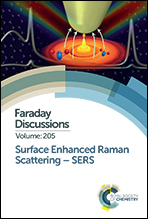Quantitative detection of isotopically enriched E. coli cells by SERS
Abstract
It is clear that investigating how bacterial cells work by analysing their functional roles in microbial communities is very important in environmental, clinical and industrial microbiology. The benefits of linking genes to their respective functions include the reliable identification of the causative agents of various diseases, which would permit appropriate and timely treatment in healthcare systems. In industrial and municipal wastewater treatment and management, such knowledge may allow for the manipulation of microbial communities, such as through bioaugmentation, in order to improve the efficiency and effectiveness of bioremediation processes. Stable isotope probing coupled with identification techniques has emerged to be a potentially reliable tool for the discrimination, identification and characterization of bacteria at community and single cell levels, knowledge which can be utilized to link microbially mediated bioprocesses to phylogeny. Development of the surface-enhanced Raman scattering (SERS) technique offers an exciting alternative to the Raman and Fourier-transform infrared spectroscopic techniques in understanding the metabolic processes of microorganisms in situ. SERS employing Ag and Au nanoparticles can significantly enhance the Raman signal, making it an exciting candidate for the analysis of the cellular components of microorganisms. In this study, Escherichia coli cells were cultivated in minimal medium containing different ratios of 12C/13C glucose and/or 14N/15N ammonium chloride as the only carbon and nitrogen sources respectively, with the overall final concentrations of these substrates being constant. After growth, the E. coli cells were analyzed with SERS employing an in situ synthesis of Ag nanoparticles. This novel investigation of the SERS spectral data with multivariate chemometrics demonstrated clear clusters which could be correlated to the SERS spectral shifts of biomolecules from cells grown and hence labelled with 13C and 15N atoms. These shifts reflect the isotopic content of the bacteria and quantification of the isotope levels could be established using chemometrics based on partial least squares regression.
- This article is part of the themed collection: Surface Enhanced Raman Scattering - SERS


 Please wait while we load your content...
Please wait while we load your content...